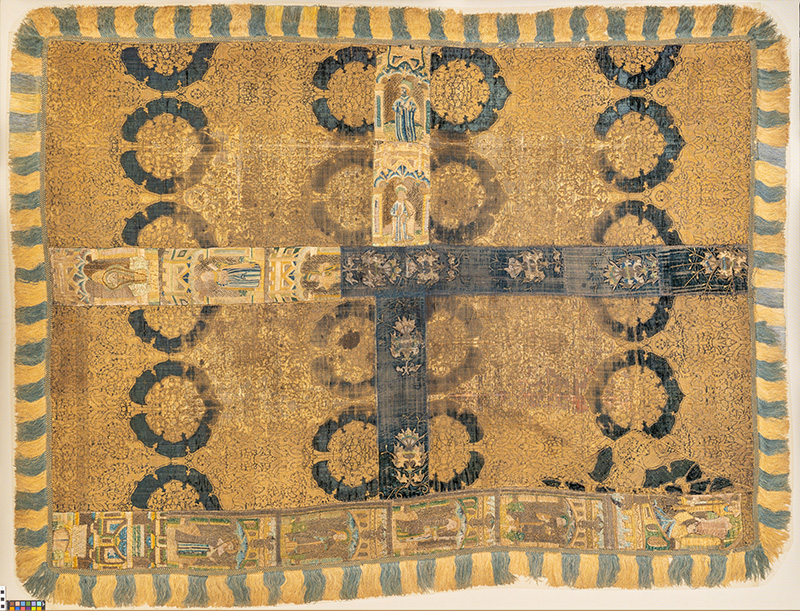
St Petrock’s Pall
In the Middle Ages, the most common use of ‘pall’ was for a large cloth, draped over the deceased at a funeral. Some palls were made of velvet or similar fine materials, and richly decorated or embroidered. We still use the word ‘pallbearer’ today to refer to a person carrying a coffin, even without a pall.
During the Reformation in England, many Protestant reformers opposed the wearing of vestments (clergy robes), believing them to be symbolic of Catholic practices and rituals. Copes, chasubles and other robes were frequently repurposed or recycled rather than destroyed. Many were cut up to make coverings for use in church services, including palls for coffins, and cloths for communion tables. The large patchwork pall on display incorporates pieces from several vestments, some around 500 years old; the panel in the lower right corner, depicting a kneeling priest, is a fragment from the hood of a cope.
Despite its name, this exquisite textile was most frequently used at St Petrock’s Church as a table cloth, rather than as a funeral pall.
- The main textile, possibly made in Florence, is typical of the late 1400s and early 1500s with gold brocaded silk featuring pomegranates and crowns, embellished with rich blue velvet corollas. There are also fragments of an even earlier plain blue velvet cloth decorated with stylised flowers.
- The long embroidered panels making up the central cross and lower band are known as orphreys. These originally formed the borders of a vestment worn by a priest during Mass, and feature saints and prophets worked in silk and metal threads. The figures include Mary Magdalene, St Paul, St John the Evangelist and King Edward the Confessor. Another figure in a monastic habit could be St Petrock, a patron saint of Cornwall.
- In the panel at the far left of the central orphrey, the original figure is covered with a piece of fabric in the form of a burial shroud, perhaps indicating the textile’s intended use as a pall. The embroidered initials B W above the shroud may be those of the needleworker.
The textile has been extensively conserved prior to display in the exhibition.
St Petrock’s Pall is currently on display in our Treasures Exhibition.